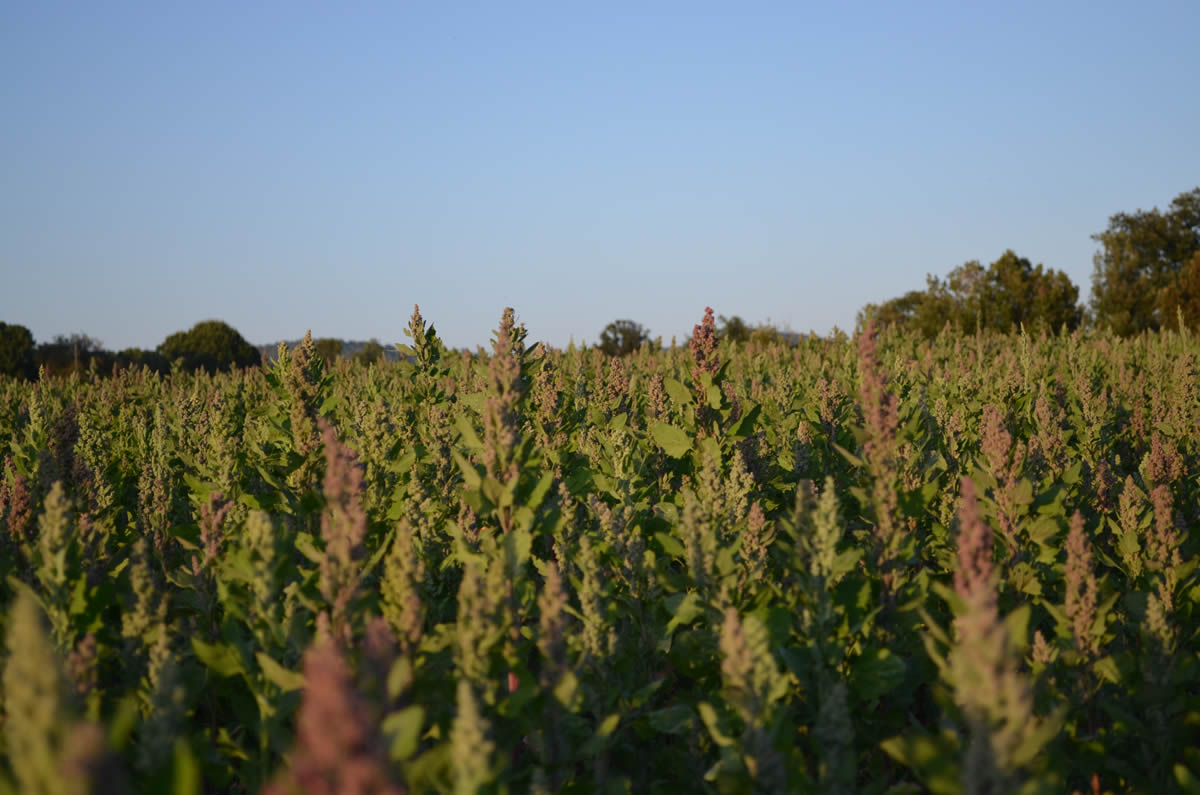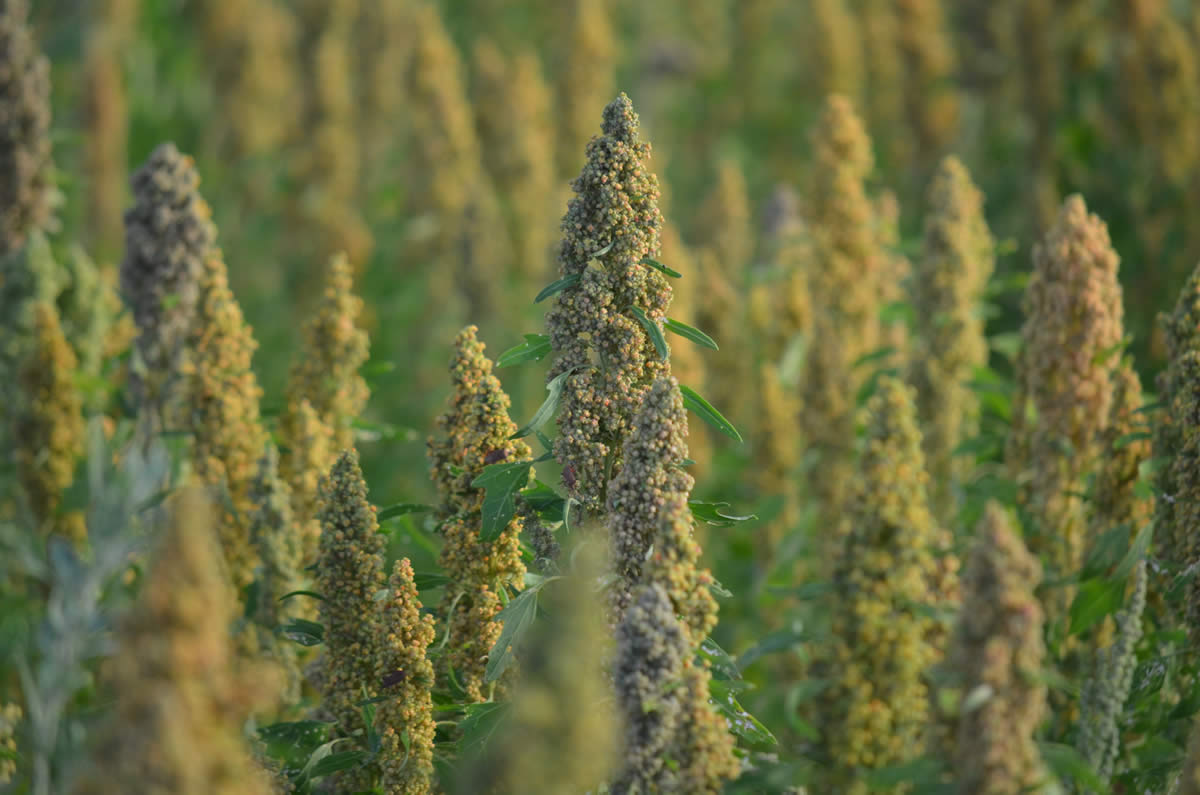Quinoa, a plant native to the Andean regions but now grown in many areas of the world, produces a seed of exceptional quality. It is considered a pseudo-cereal as is botanically part of the Chenopodiaceae family, but the characteristics of the seed and its use make it very similar to a cereal. Also, from an agronomic point of view, the cultivation technique is very close to that of a spring cereal, both in terms of phenological cycle and cultivation technique (read the cultivation guidelines). The cultivation of Quinoa is also spreading significantly in Europe, from southern Europe to the Scandinavian countries, with more than satisfactory results both in terms of production and quality. Resistance to drought is one of the peculiarities of this vegetable, so much so that many researchers indicate it as a possible productive alternative to cope with climate change and drought. The success of Quinoa is also due to its high protein and amino acid content (it contains all the essential amino acids), which make it one of the preferred foods (together with legumes and Amaranth) in light of the many projects aimed at replacing animal proteins with vegetable proteins. Furthermore, another aspect not intrinsic to the plant, but which has contributed in a fundamental way to the increase in production in Europe, is certainly environmental sustainability, especially as regards the emissions caused by the transport of Quinoa from South America to Europe. For those approaching the cultivation of Quinoa for the first time, we recommend using seeds of varieties tested in Europe, therefore suitable for our latitudes. Quinoa is, in fact, sensitive to the photoperiod and only a small percentage of existing commercial varieties adapt to latitudes different than those of Central and South America.
At the production level, it is necessary to make a distinction between varieties with saponins (bitter) and varieties without saponins*(sweet). The agronomic difference is minimal and is mainly limited to the fact that saponin is a natural defence for the seed and protects it more from parasitic attacks. The important difference between bitter and sweet quinoa lies in the post-harvest and processing phase.
Quinoa, a plant native to the Andean regions but now grown in many areas of the world, produces a seed of exceptional quality. It is considered a pseudo-cereal as is botanically part of the Chenopodiaceae family, but the characteristics of the seed and its use make it very similar to a cereal. Also, from an agronomic point of view, the cultivation technique is very close to that of a spring cereal, both in terms of phenological cycle and cultivation technique (read the cultivation guidelines). The cultivation of Quinoa is also spreading significantly in Europe, from southern Europe to the Scandinavian countries, with more than satisfactory results both in terms of production and quality. Resistance to drought is one of the peculiarities of this vegetable, so much so that many researchers indicate it as a possible productive alternative to cope with climate change and drought. The success of Quinoa is also due to its high protein and amino acid content (it contains all the essential amino acids), which make it one of the preferred foods (together with legumes and Amaranth) in light of the many projects aimed at replacing animal proteins with vegetable proteins. Furthermore, another aspect not intrinsic to the plant, but which has contributed in a fundamental way to the increase in production in Europe, is certainly environmental sustainability, especially as regards the emissions caused by the transport of Quinoa from South America to Europe. For those approaching the cultivation of Quinoa for the first time, we recommend using seeds of varieties tested in Europe, therefore suitable for our latitudes. Quinoa is, in fact, sensitive to the photoperiod and only a small percentage of existing commercial varieties adapt to latitudes different than those of Central and South America.
At the production level, it is necessary to make a distinction between varieties with saponins (bitter) and varieties without saponins*(sweet). The agronomic difference is minimal and is mainly limited to the fact that saponin is a natural defence for the seed and protects it more from parasitic attacks. The important difference between bitter and sweet quinoa lies in the post-harvest and processing phase.
*Without Saponins: All varieties of Quinoa have a minimum amount of saponins, the definitions “saponin free”, “Saponin free” or “Sweet quinoa” not necessarily indicate a total absence of saponins, but a very low content of saponins, which does not require particular “desaponification” interventions.
Would you like to grow quinoa in your farm?
Read our cultivation guidelines
or contact us
Would you like to grow quinoa in your farm?
Read our cultivation guidelines
or contact us
Processing and use
Once collected and verified that the seed is dry, Quinoa (like any other seed) must be selected to remove all impurities and weeds that may be present. After having made the selection, the sweet varieties are practically ready for consumption, or for a possible transformation into flour, cream puffs, beer, quinoa milk etc. The bitter varieties require an additional step for the removal of saponin, which is done by abrasion with special machines equipped with brushes. This intervention results in a waste of product that can vary from 15% to 25%. In many cases, especially for an aesthetic reason, even the sweet varieties are subjected to a light brushing, much less invasive than that applied to the bitter varieties, to make the seed whiter and brighter. The bitter and sweet quinoa are then used in the same way. It is true, however, that the sweet quinoa, not being subjected to a brushing treatment (or only to a very light treatment), preserves the qualities and substances contained in the seed, in contrast to the bitter quinoa that loses some of the minerals in the cleaning phase.








